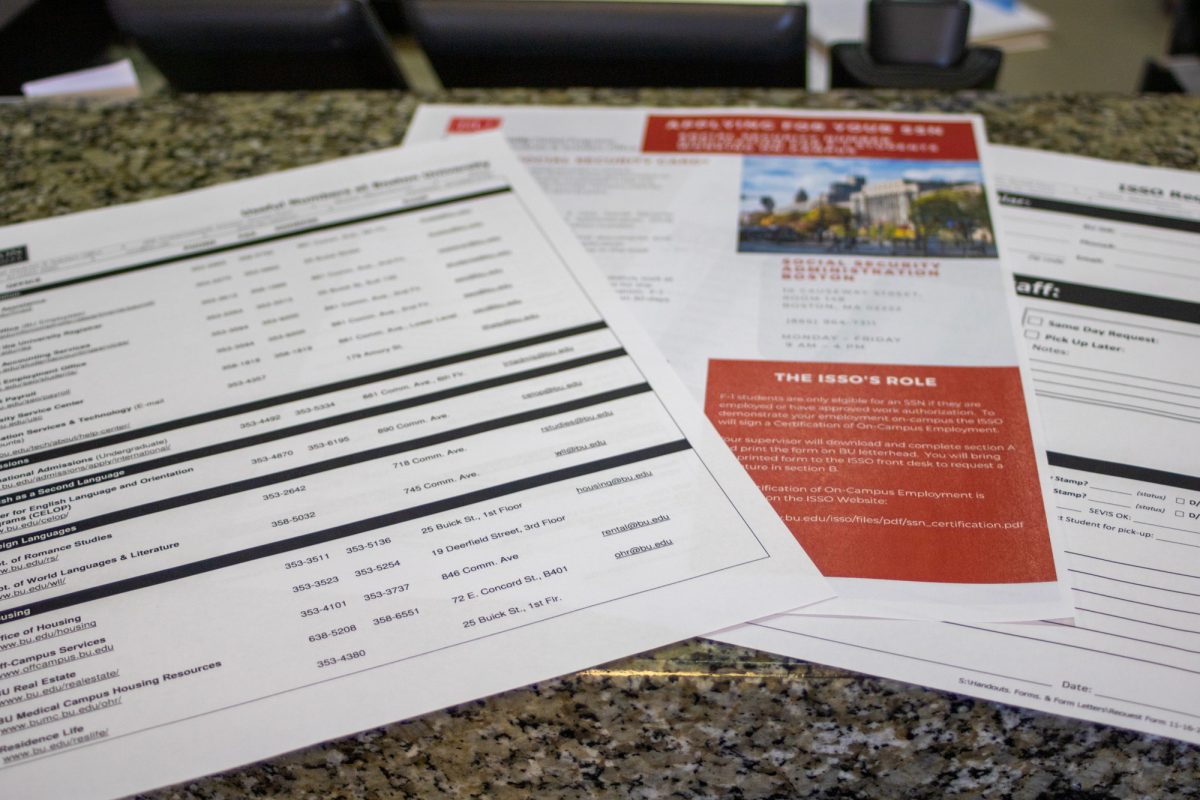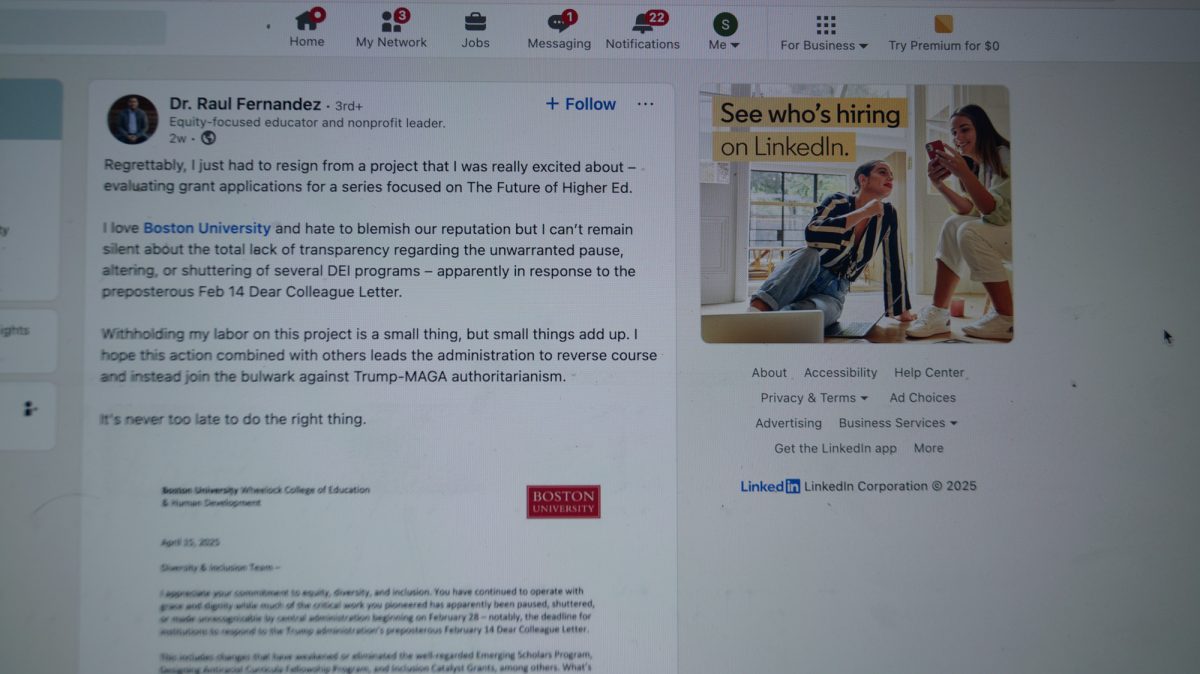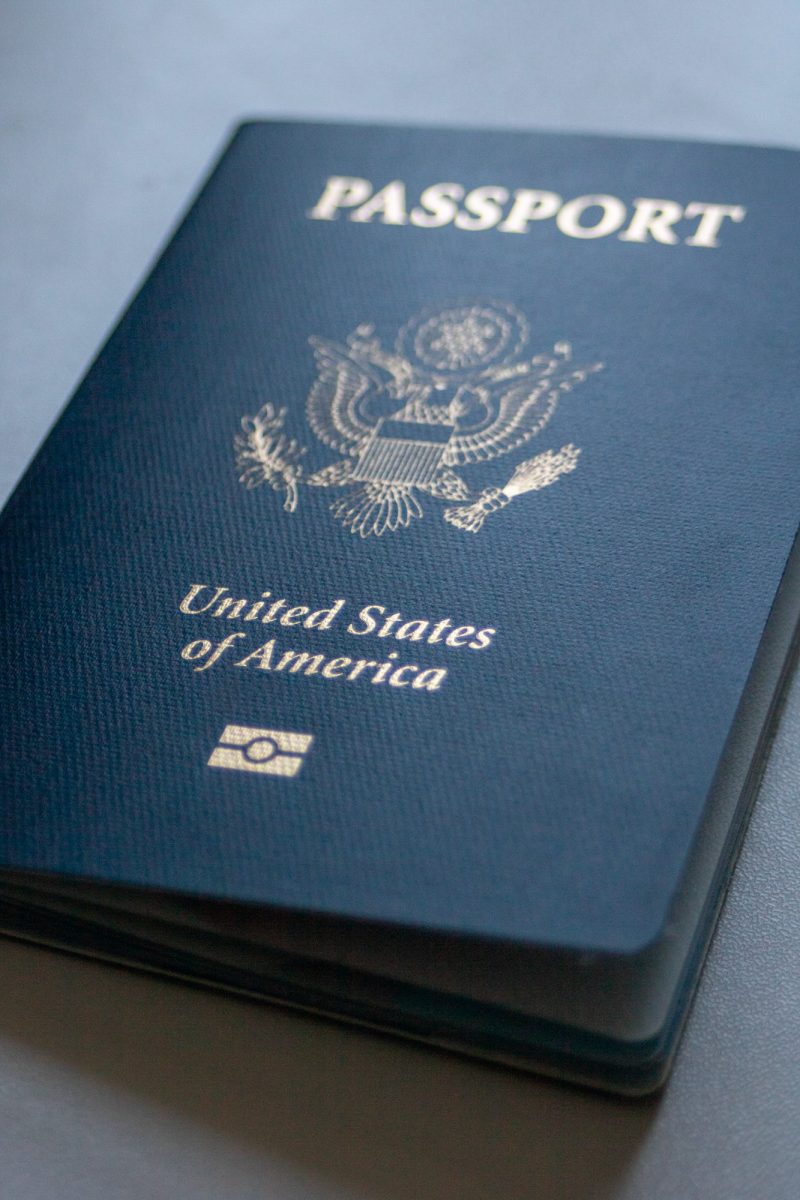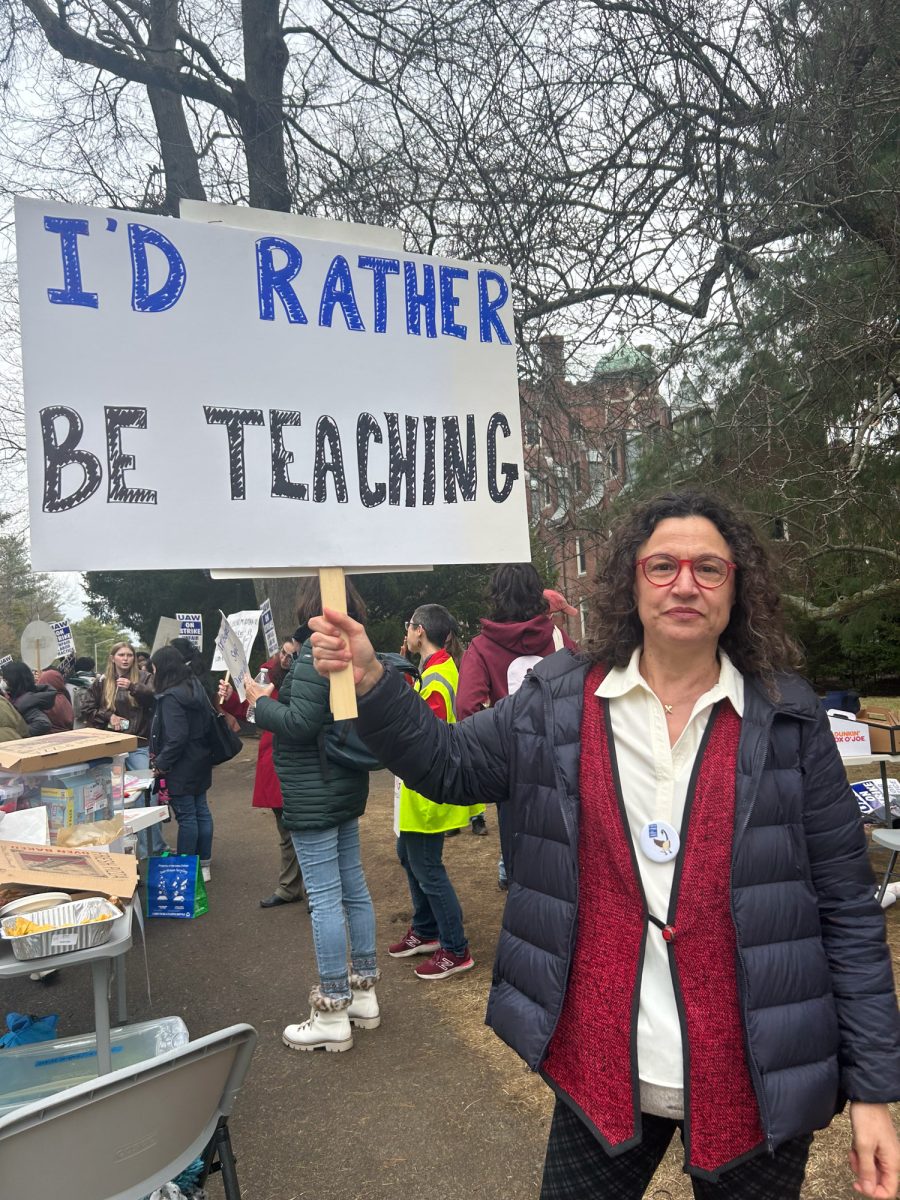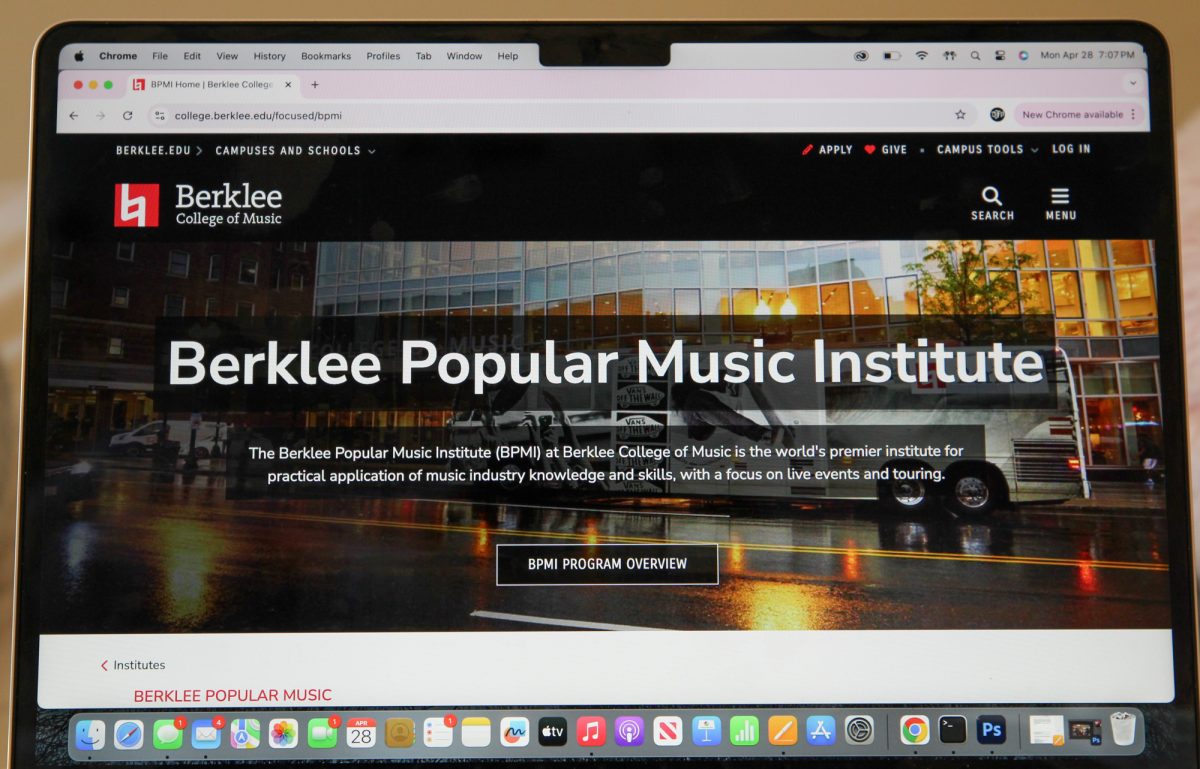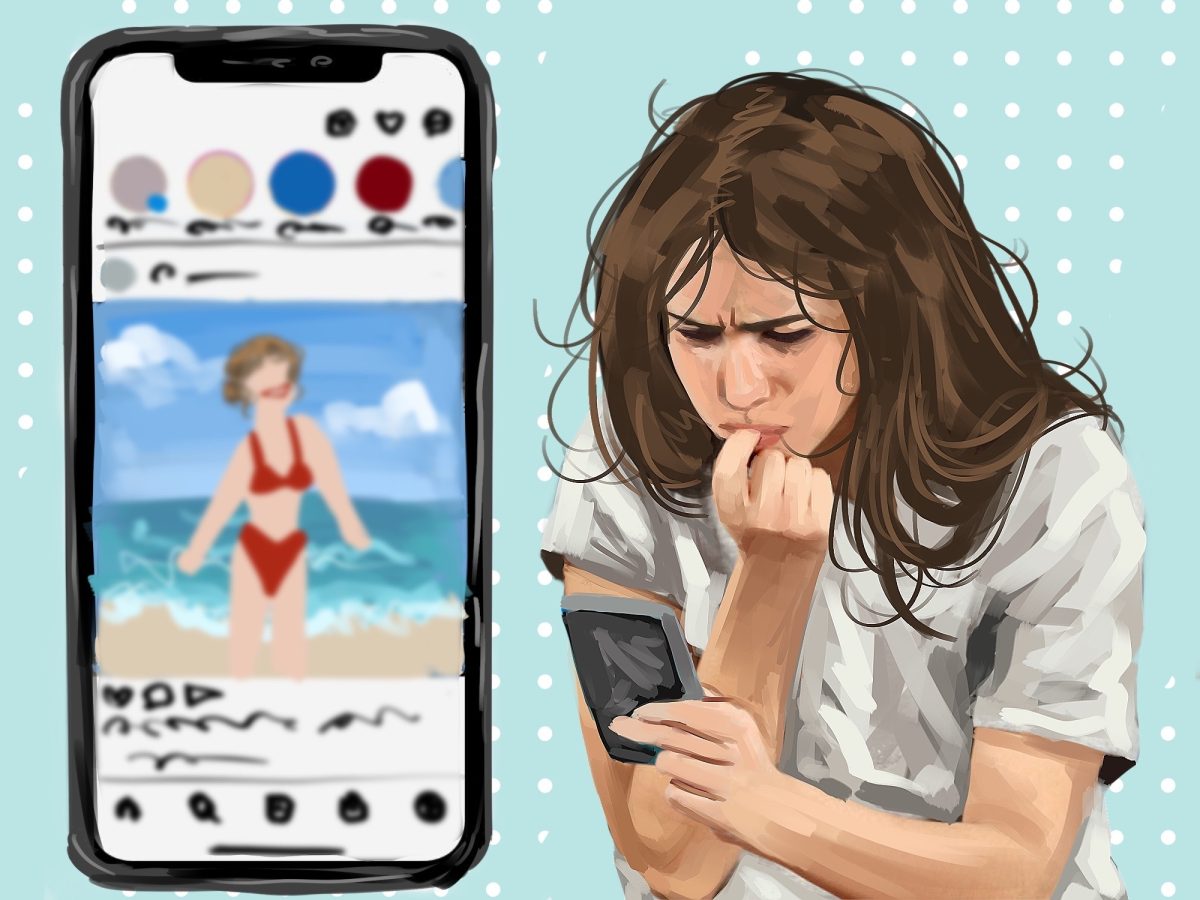Tattoos of a tamarin monkey, a DNA strand and a sifaka lemur catch students’ attention as anthropology professor Richard Lawler gestures during lectures; the forearm ink represents educational milestones – and academia’s increased acceptance of body art.
Once considered the marks of misfits and sailors, tattoos are becoming more publicly accepted and widespread in the college community, Boston University students and faculty said. A 2006 Pew Research Center survey showed that 36 percent of 18- to 25-year-olds have a tattoo; 40 percent of 26- to 40-year-olds reported going under the needle.
“Most people get tattoos to mark an event in their life,” Lawler said. “What I marked was what I learned.”
Each of Lawler’s tattoos represents a degree he earned. The DNA strand represents his bachelor’s degree and the tamarin monkey, his master’s degree. When Lawler completed his doctorate, his dissertation advisor paid for the third tattoo, a lemur, he said.
“I don’t think any of my students want tattoos,” Lawler said, of footing the bill for his students. “But if they do and they finish, I’ll buy them one — or two if they finish quickly.”
Lawler said almost everyone loves his tattoos when he goes to academic conferences, and they quickly become conversation centerpieces. Occasionally, there are times when he meets more traditionally minded people and he rolls down his sleeves, he said.
“Tattoos are commonplace; no longer taboo, no longer what sailors get,” Lawler said.
“More and more common, you see people getting creative with their tattoos that are custom-made to make their tattoo set apart.”
Lawler is not the only person inspired by his college experiences to get inked. David Chasse, a School of Education sophomore, said being away from home made it easier for him to get his body art than when he lived at home.
“If I were at home, I wouldn’t know where to go,” Chasse said. “I think people get their first tattoos when they are in college because it’s their first chance to be completely on their own, and they are not under control of anyone.”
Because he is studying to become a teacher, Chasse said he decided to get his tattoos in easily concealable locations. He thinks there are different acceptance levels between college and high school for teachers who have tattoos, he said.
“I knew I wanted to be a college professor,” Lawler said. “In high school, there is a lot more stress on appearance because [teachers] are setting an example for young adults. Because you’re adults in college, it’s more open-minded.”
Tattoos are no longer seen as spontaneous or the result of impulsive behavior as they have been in the past, Lawler said. The permanent marks have become planned, to commemorate milestone events in people’s lives, he said.
“It’s no longer a novelty thing you do in Vegas when you’re drunk,” he said. “It goes hand-in-hand with planning out what you want and figuring out what’s important to you.”
Many college students have tattoos, in part, because it is “the thing to do,” Student Health Services Director David McBride said in an email.
There are more than 15,000 tattoo shops nationwide in a $2.3 billion industry, which has little regulatory oversight, according to Inc. Magazine.
The Food and Drug Administration has launched several studies about the long-term effects of tattoos and how they chemically break down in the body to determine whether restrictions and regulations need to be implemented, according to a Feb. 6 New Jersey Business News article.
“I do recommend a reputable tattoo artist,” McBride said. “Don’t get your tattoo in Mexico on Spring Break. I think that people think over the decision carefully before going ahead, the tattoo is essentially permanent.”
SED junior Alex Beach said he gave considerable thought to his pair of Boston Red Sox tattoos. Because his siblings already had tattoos, Beach said he considered it a “rite of passage.”
“I tried to think of something I would love unconditionally, and that was the Red Sox,” he said.
He said tattoos are popular among college students because they are old enough to legally get tattoos and have determined what design they want and where they want it. Beach and his two brothers are thinking of getting matching tattoos together, he said.
“A lot of people make up their minds by the time they are 18, so the years after that are prime time to get tattoos,” he said.
But personal expression is not the only consequence of body art. Some risks involved with tattoos are infection, removal problems, allergic reactions, scar formation and dissatisfaction with the outcome of the design, according to an FDA website.
“The tattoo that seemed stylish at first may become dated and embarrassing,” the FDA states on its website. “And changing tattoos or permanent makeup is not as easy as changing your mind.”
McBride said allergic reactions to the dye occur frequently, but more serious complications, such as Hepatitis C transmission, have also been reported among tattooed people.
“You should always buy your own clean needles and ink,” McBride said.
Lawler said the tattoo process itself is painful, making it “a sort of initiation.”
“It’s interesting those who get one will usually get more,” Lawler said. “They are addictive. I can’t explain it.”


